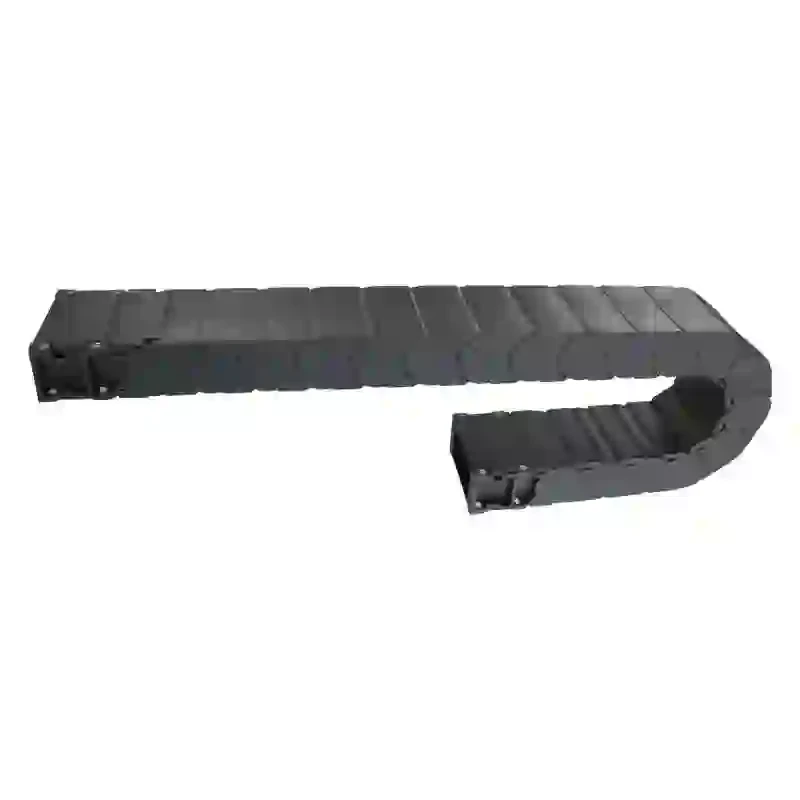drag chain for cnc
Understanding Drag Chains for CNC Machines A Comprehensive Guide
CNC (Computer Numerical Control) machines have revolutionized manufacturing and machining processes by enhancing precision, efficiency, and automation. One vital component in maintaining the effectiveness of CNC machinery is the drag chain, often referred to as a cable carrier. In this article, we will delve into the significance of drag chains for CNC machines, their design, benefits, and considerations for selecting the right type for your specific needs.
What is a Drag Chain?
A drag chain is a vital accessory that keeps cables and hoses organized while allowing for movement without entanglement or damage. Typically found in industrial applications, drag chains facilitate the orderly routing of electrical wires, data cables, pneumatic hoses, and hydraulic lines. In a CNC machine, effective management of these components is crucial for unhindered movement across multiple axes, which is essential for complex machining operations.
The Importance of Drag Chains in CNC Machinery
1. Protection and Organization The primary function of a drag chain is to protect sensitive cables and hoses from wear and tear caused by friction, abrasion, and the harsh machining environment. By neatly managing these components, drag chains prevent tangling and accidental disconnections, ensuring consistent machine operation.
2. Enhanced Mobility As a CNC machine moves through its programmed paths, the drag chain accommodates the dynamic movement of cables and hoses. This flexibility supports uninterrupted workflow, allowing CNC machines to perform intricate operations seamlessly.
3. Reduced Downtime Organizing cables and hoses with drag chains significantly reduces the likelihood of wear-induced downtime. When cables are protected and managed efficiently, the need for frequent maintenance and replacements is minimized, contributing to increased machine availability.
4. Safety In a busy workshop or manufacturing environment, loose cables can pose safety hazards. Drag chains ensure that cables are securely housed, reducing tripping risks and potential accidents involving equipment or personnel.
Types of Drag Chains
There are several types of drag chains available on the market today, each designed for specific applications and requirements
drag chain for cnc

1. Plastic Drag Chains Made from durable plastic, these drag chains are lightweight and resistant to chemicals, making them ideal for various industrial applications. They are commonly used but may have limitations in high-temperature environments.
2. Metal Drag Chains These chains are designed to withstand extreme conditions, including high temperatures and heavy loads. Metal drag chains offer durability and longevity, making them suitable for high-demand CNC applications.
3. Flexibility and Size Drag chains come in various sizes and configurations to meet specific needs. Flexibility is essential for accommodating multi-axis machines, allowing for free movement without compromising cable integrity.
Selecting the Right Drag Chain
When choosing a drag chain for your CNC machine, several factors should be considered
1. Application Requirements Understand the specific needs of your CNC operation, including the types and number of cables or hoses involved, as well as their required movement.
2. Environmental Conditions Evaluate the environment in which your CNC machine operates. High temperatures, exposure to chemicals, and heavy dust can influence the material and design of the drag chain you select.
3. Load Capacity Ensure that the drag chain can bear the weight of the cables and hoses without sagging or causing wear. Manufacturers typically provide load ratings for their products.
4. Expansion and Modification Consider whether your setup might change in the future. Some drag chains offer modular or expandable designs to accommodate potential upgrades.
Conclusion
In conclusion, drag chains are essential components for the efficient operation of CNC machines. They ensure the proper organization, protection, and mobility of cables and hoses, directly impacting the machine's performance, safety, and longevity. By understanding the different types of drag chains available and the critical factors to consider when selecting one, CNC operators can significantly enhance their machining processes and maintain optimal productivity. Investing in a reliable drag chain system is a proactive step towards achieving a more efficient and safer machining environment.








